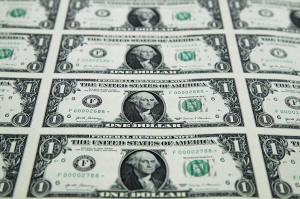Along with a strong second quarter rebound for the US economy, some red
flags
[July 31, 2025] By
PAUL WISEMAN
WASHINGTON (AP) — The U.S. economy expanded at a surprising 3% annual
pace from April through June, bouncing back at least temporarily from a
first-quarter drop that reflected disruptions from President Donald
Trump’s trade wars.
Still, details of the report suggested that U.S. consumers and
businesses are wary about the economic uncertainty arising from Trump's
radical campaign to restructure the American economy by slapping big
taxes — tariffs — on imports from around the world.
“Headline numbers are hiding the economy’s true performance, which is
slowing as tariffs take a bite out of activity,” Nationwide chief
economist Kathy Bostjancic wrote.
America gross domestic product — the nation’s output of goods and
services — rebounded after falling at a 0.5% clip from January through
March, the Commerce Department reported Wednesday. The first-quarter
drop, the first retreat of the U.S. economy in three years, was mainly
caused by a surge in imports — which are subtracted from GDP — as
businesses scrambled to bring in foreign goods ahead of Trump’s tariffs.
The bounceback was expected but its strength was a surprise: Economists
had forecast 2% growth from April through June.
From April through June, a drop in imports — the biggest since the
COVID-19 outbreak — added more than 5 percentage points to growth.
Consumer spending registered lackluster growth of 1.4%, though it was an
improvement over the first quarter's 0.5%.

Private investment fell at a 15.6% annual pace, biggest drop since
COVID-19 slammed the economy. A drop in inventories — as businesses
worked down goods they'd stockpiled in the first quarter — shaved 3.2
percentage points off second-quarter growth.
A category within the GDP data that measures the economy’s underlying
strength weakened in the second quarter, expanding at a 1.2% annual
pace, down from 1.9% from January through March and the weakest since
the end of 2022. This category includes consumer spending and private
investment but excludes volatile items like exports, inventories and
government spending.
[to top of second column] |

A sheet of new $1 bills is seen, Nov. 15, 2017, at the Bureau of
Engraving and Printing in Washington. (AP Photo/Jacquelyn Martin,
File)
 Federal government spending and
investment fell at a 3.7% annual rate on top of a 4.6% drop in the
first quarter.
Wednesday’s GDP report showed inflationary pressure easing in the
second quarter. The Federal Reserve’s favored inflation gauge – the
personal consumption expenditures, or PCE, price index – rose at an
annual rate of 2.1% in the second quarter, down from 3.7% in the
first. Stripping out volatile food and energy prices, so-called core
PCE inflation rose 2.5%, down from 3.5% in the first quarter.
On his Truth Social media platform, Trump heralded the GDP gain and
stepped up his pressure on the Federal Reserve to cut interest
rates: "2Q GDP JUST OUT: 3%, WAY BETTER THAN EXPECTED! “Too Late”
MUST NOW LOWER THE RATE. No Inflation! Let people buy, and
refinance, their homes!''
Trump sees tariffs as a way to protect American industry, lure
factories back to the United States and help pay for the massive tax
cuts he signed into law July 4.
But mainstream economists — viewed with disdain by Trump and his
advisers — say that his tariffs will damage the economy, raising
costs and making protected U.S. companies less efficient. They note
that tariffs are paid by importers in the United States, who try to
pass along the cost to their customers via higher prices. Therefore,
tariffs can be inflationary — though their impact so far has been
modest.
All contents © copyright 2025 Associated Press. All rights reserved
 |